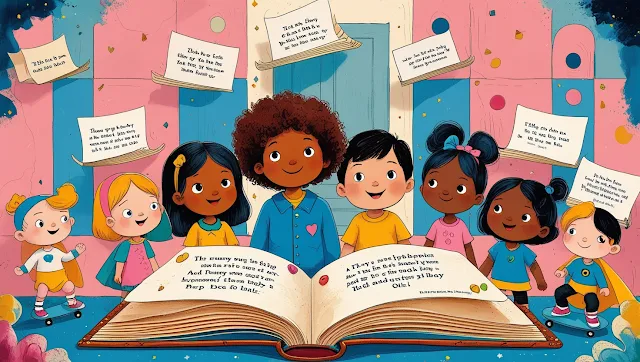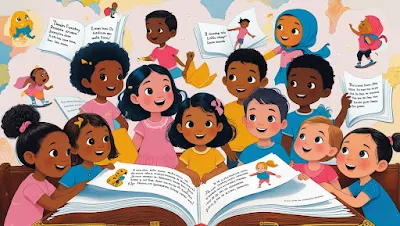Nursery rhymes have long been a staple in early childhood development, offering rhythmic patterns and simple melodies that aid in language acquisition and cognitive growth. However, as we progress into the digital age, these timeless tunes are undergoing significant transformations. Modern adaptations are infusing traditional nursery rhymes with contemporary elements, making them more relatable and engaging for today's tech-savvy children.
The Digital Renaissance of Nursery Rhymes
Platforms like YouTube have become the new playgrounds for nursery rhymes. Channels such as Cocomelon, Gracie's Corner, and Ms. Rachel's Songs for Littles are at the forefront of this evolution.
-
Cocomelon: Originally launched in 2006 as "checkgate," this channel rebranded to "ABC Kid TV" in 2013 and finally to "Cocomelon" in 2018. It now boasts over 190 million subscribers and has expanded its reach through Netflix series and merchandise. Wikipedia The Verge
-
Gracie's Corner: Founded in 2020, this channel offers culturally relevant remixes of classic nursery rhymes. With over 5 million subscribers, it has garnered attention for its inclusive content and collaborations with artists like Snoop Dogg .People.com
-
Ms. Rachel's Songs for Littles: Created by Rachel Accurso in 2019, this channel focuses on speech development through songs and interactive play. It has amassed over 10 million subscribers and recently expanded to Netflix with four curated episodes .Netflix
These platforms illustrate how traditional nursery rhymes are being reimagined to suit the preferences and needs of modern audiences.
Musical Innovations and Genre Blending
Modern nursery rhymes are no longer confined to simple melodies. Educators and content creators are experimenting with various musical genres to make learning more engaging.
-
Hip-Hop and Rap: Gracie's Corner has collaborated with artists like Paul Wall to create hip-hop-infused versions of nursery rhymes, such as the "H-Town Remix" of "Wheels on the Bus." This approach introduces children to rhythm and rhyme in a contemporary context .Chron
-
Electronic and Dance Music: Channels like Kidz Bop and The Countdown Kids produce danceable versions of classic songs, encouraging children to move and groove while learning.
-
Jazz and Blues: Some creators are incorporating jazz and blues elements into nursery rhymes, offering a rich auditory experience that introduces children to diverse musical traditions.
These genre-blending techniques not only make nursery rhymes more appealing but also expose children to a wide range of musical styles.
Cultural Relevance and Representation
One of the most significant shifts in modern nursery rhymes is the emphasis on cultural relevance and representation. Channels like Gracie's Corner are leading the way by integrating elements from various cultures into their content.
-
Cultural Themes: In "The Phonics Song," Gracie dons an ancient Egyptian sheath dress, and in "Count to 100," she wears a full HBCU marching band uniform. These visuals not only make learning fun but also introduce children to diverse cultural symbols and traditions .Wikipedia
-
Inclusive Storytelling: By featuring characters from different backgrounds and experiences, these channels promote inclusivity and help children see themselves reflected in the media they consume.
This focus on cultural relevance ensures that nursery rhymes resonate with a global audience and foster a sense of belonging among all children.
Despite the modern twists, the core educational value of nursery rhymes remains intact. These reimagined versions continue to support various aspects of child development.
-
Language Skills: The rhythmic patterns and repetitive lyrics enhance vocabulary acquisition and phonemic awareness.
-
Motor Skills: Interactive elements like clapping and dancing promote coordination and physical development.
-
Emotional Intelligence: Songs that address emotions and social situations help children understand and express their feelings.
By combining entertainment with education, modern nursery rhymes provide a holistic approach to early childhood development.
Conclusion
The evolution of nursery rhymes from traditional lullabies to modern remixes reflects the changing landscape of children's media. Through digital platforms, genre-blending music, cultural representation, and educational content, nursery rhymes continue to play a vital role in early childhood development. As we look to the future, these innovative adaptations promise to keep nursery rhymes relevant and engaging for generations to come.













0 Comments